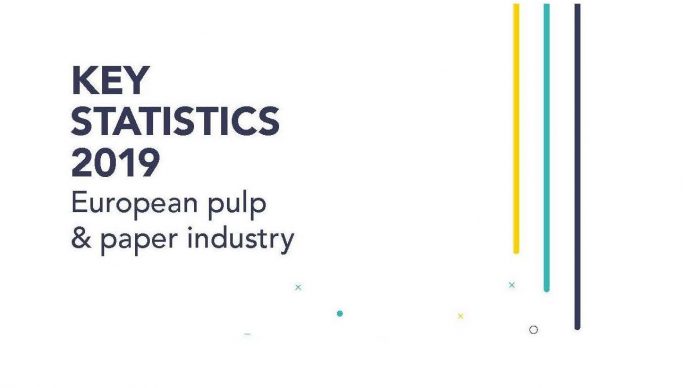
In 2019, the members of CEPI (Confederation of European Paper Industry) produced close to 90 million tonnes of paper and board, of which 54.6% were based on recycled fibres – compared to 53.1% in 2018 – as indicated by the utilisation rate of Paper for Recycling (PfR).
This exceptional performance goes hand in hand with a 72% paper recycling rate after 71.7% the previous year, reinforcing our commitment to sustainable and circular business practices.
More than ever, paper for recycling is a major source of fibres while the share of domestic wood used by the pulp and paper industry reached 84.2% in 2019 (84.1% in 2018), demonstrating that we are truly “Made in Europe” from European raw materials. Of wood consumed, a large share (24%) is also circular as it is residues from saw mills and wood working industries. Our industry is also a net exporter with 22% of our production exported outside Europe.
Speciality paper & board production was stable in 2019, showing robust positioning on end-markets. Also, market pulp production grew (+6.1%) as a result of recent significant investments in new capacities. Market pulp exports grew by 48% in 2019.
Over the first 5 months of 2020, due to the COVID-19 impact, paper and board production declined but to more favourable rate (-4.5 %,) than what most other manufacturing industries experienced (on average -20.4%), showing that the Covid-19 impact on pulp & paper industry was less pronounced than in other manufacturing sectors due to intrinsic resilience of our sector.
Paper and board consumption declined in 2019 following the slowing down of the EU’s economy. However domestic demand for hygiene papers (tissue, toilet paper, etc.) remained relatively high in the first months of 2020, and packaging has been benefiting from e-commerce growth.
The COVID-19 crisis has also accelerated an underlying change in consumption patterns related to the increase in teleworking and digitalisation which could have a long-lasting impact in the retail structures and production patterns. It could also open new opportunities for packaging. Similarly, production patterns are likely to change after the crisis exposed the lack of resilience of the EU economy; repatriation of industry, such as pharmaceuticals, in Europe is positive also for pulp and paper industry.
During the lockdown situation, our industry has been recognized as an essential sector in various Member States such as Belgium, Czech Republic, Finland, Hungary, Italy and Spain. In line with this recognition, the priority for our industry has been to ensure that EU citizens were able to access the products they needed for hygiene, health and food purposes.
In that spirit, we have been working with other industries in the value-chain to operate as much in a “business as usual” mode as possible and guarantee security of supply and transport despite the lockdowns.
In 2020, paper and board markets will likely be impacted by the anticipated decline of the European GDP in 2020 both in the EU and the euro area by -8.3% and -8.7% respectively as a result of the Covid-19 crisis (source: EU Commission – Summer economic forecast 2020).
However, in 2021, the EU economy is expected to grow by 5.8% and the euro area economy will grow by 6.1% bringing a positive outlook for paper and board markets as well, knowing that they will rebound.
Access the full Cepi Key Statistics 2019 here.

































